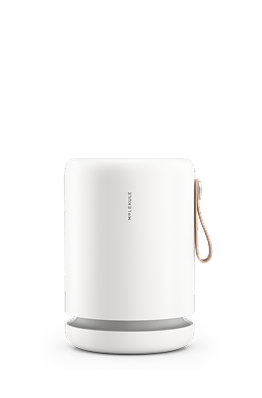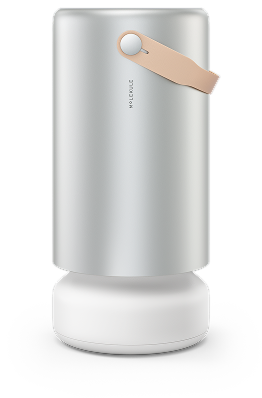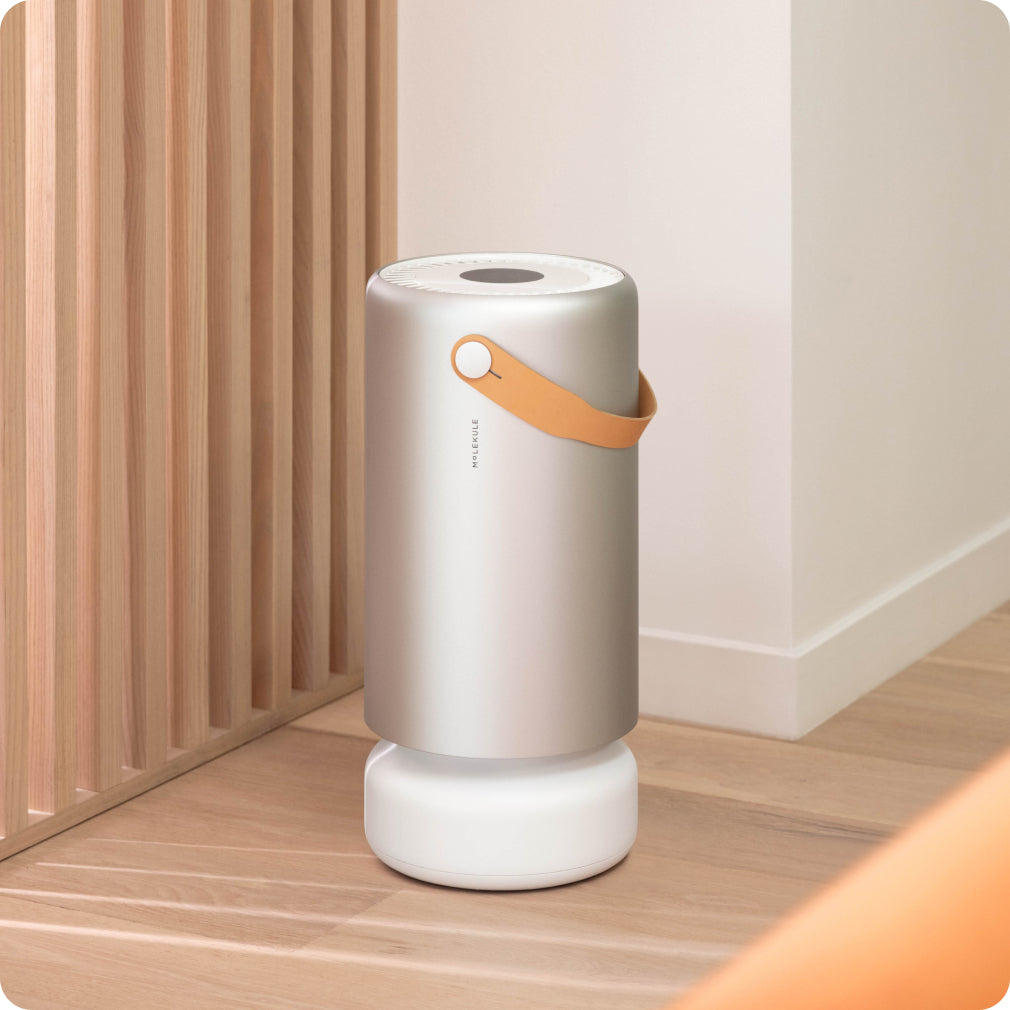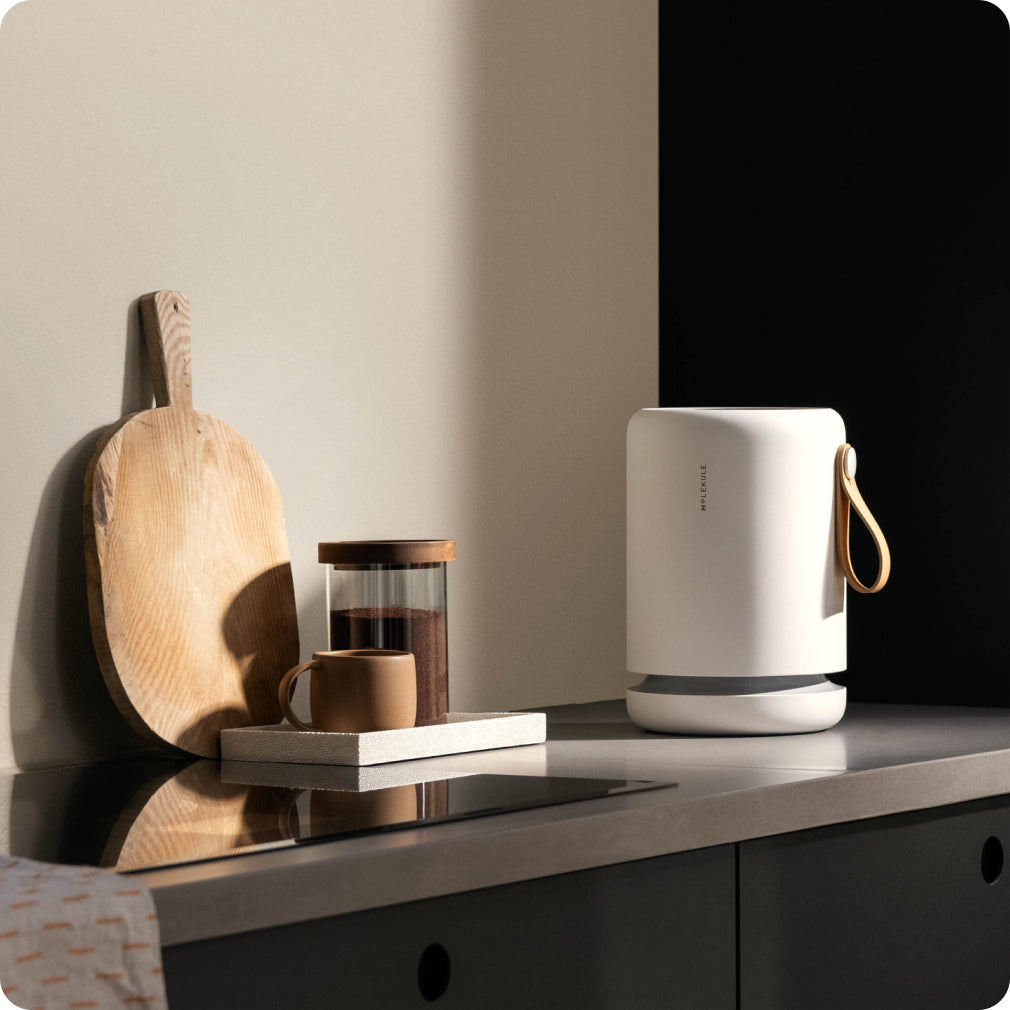If you wake up sneezing or your eyes start to itch on a windy morning, it can be hard to know what to blame. Dust and pollen allergies feel similar, but they come from very different places. Dust allergies happen inside the home and tend to bother you year-round. Pollen allergies are seasonal and usually flare when trees, grasses, or weeds release pollen.
Knowing the difference helps you treat symptoms better and keep your air cleaner. Along with smart cleaning and avoidance, advanced air purifiers that destroy allergen proteins can make a real difference indoors.
Key Takeaways
-
Timing: Dust allergies are year-round. Pollen allergies are seasonal.
-
Where they start: Dust allergens live indoors in bedding, carpets, and furniture. Pollen comes from outdoor trees, grass, and weeds.
-
Patterns: Dust symptoms often worsen at night and during cleaning. Pollen symptoms peak in the morning and on windy days.
-
Treatments: Both respond to antihistamines and nasal sprays. Dust needs steady indoor controls. Pollen needs seasonal avoidance.
-
Advanced relief: Some air purifiers can destroy dust mite and pollen allergens at the molecular level.
What Triggers Each Allergy
Dust allergies come from allergens inside house dust, especially dust mite droppings. Pet dander allergies and mold spores add to the mix. These allergens thrive in soft surfaces like mattresses, pillows, rugs, and upholstered furniture.
Pollen allergies are reactions to plant pollen released by trees, grasses, and weeds. Tree pollen usually appears in spring, grass pollen in late spring and summer, and weed pollen in late summer and fall.
When Symptoms Flare Up
Cleaning can stir up settled dust and make symptoms spike. With pollen, counts often peak between early morning and late morning, then drop at night or after rain.
This table shows the key differences between dust allergies and pollen allergies:
|
Feature |
Dust Allergies |
Pollen Allergies |
|
Timing |
Year-round |
Seasonal peaks |
|
Worse when |
At night, during or after cleaning |
Morning hours, dry and windy days |
|
Typical setting |
Indoors, especially bedrooms |
Outdoors or near open windows |
|
Duration |
Ongoing when exposed |
Weeks to months per season |
|
Common clues |
Stuffy mornings, worse in bed |
Itchy eyes outdoors, relief after rain |
How Symptoms Overlap
Both dust and pollen allergies can cause:
-
Sneezing and runny nose
-
Nasal congestion and postnasal drip
-
Itchy, watery eyes
-
Scratchy throat and coughing
People with asthma may also notice wheezing or chest tightness when triggered by dust exposure or pollen. Because the symptoms are similar, timing and location are the best clues.
How to Tell Which One You Have
Likely dust: You feel worse inside, especially at bedtime or when you wake up. Cleaning makes you sneeze or cough.
Likely pollen: You feel worse outdoors or with windows open. Symptoms flare in the morning and improve after rain or when you stay inside.
Tracking your symptoms for one to two weeks can help your doctor spot patterns. Allergy testing with skin pricks or blood tests can confirm the triggers.
Treatments That Help Both
If pollen triggers you, begin medicines about two weeks before your local season starts. For dust, stay consistent year-round.
-
Antihistamines: Fexofenadine, loratadine, or cetirizine help reduce sneezing and itching.
-
Nasal steroid sprays: Fluticasone or mometasone reduce swelling and congestion.
-
Decongestants: Short-term relief for stuffiness. Avoid long use of nasal decongestant sprays to prevent rebound congestion.
-
Immunotherapy: Allergy shots or sublingual tablets can train your immune system over time. Tablets are available for grass and ragweed pollen and for dust mites.
How to Control Dust
Here are some areas in which you can practice good hygiene to limit dust buildup:
-
Bedding: Use zippered allergen-proof covers on pillows, mattresses, and box springs.
-
Laundry: Wash sheets weekly in hot water at 130°F or higher.
-
Floors: Replace wall-to-wall carpet with hard flooring when possible.
-
Vacuuming: Use a vacuum with a sealed HEPA filter. If you have symptoms, ask someone else to vacuum and reenter later.
-
Humidity: Keep indoor humidity between 30 and 50 percent to slow dust mites.
-
Clutter: Reduce stuffed toys, extra pillows, and dust-catching decor in bedrooms.
In addition to dust, learn how temperature and humidity can affect your sleep.
How to Control Pollen
Keep pollen out of your life as much as possible by taking these actions:
-
Limit exposure: Keep windows closed on high-pollen days. Use air conditioning on recirculate.
-
Clean up after outings: Shower and change clothes after being outdoors. Wash hair before bed.
-
Check counts: Plan activities for lower-pollen times and use masks on windy days.
-
Entry points: Wipe pets and gear before they come inside. Rinse porch and entry mats.

Why Many Purifiers Are Not Enough
Standard HEPA purifiers are useful because they trap particles. But trapped allergen proteins can stay active on the filter. Some may release during maintenance. Gaseous compounds can also slip through mechanical filters.
Molecular air purification for allergies goes further. Molekule’s PECO technology destroys allergen proteins from dust mites and pollen at the molecular level instead of just trapping them. This reduces the chance of re-exposure and supports cleaner air in every season.
The Air Pro is for large spaces up to 1,000 square feet with quiet operation and automatic adjustments.
The Air Mini+ is for bedrooms and small rooms up to 250 square feet.
Putting It All Together
Dust and pollen allergies feel similar but need different prevention strategies. Match your plan to the trigger and keep your indoor air as clean as possible for relief you can feel year-round.
-
Identify the pattern: Nighttime and indoor triggers suggest dust. Morning and outdoor triggers suggest pollen.
-
Treat the symptoms: Use antihistamines and nasal sprays. Consider immunotherapy for long-term relief.
-
Control the environment: For dust, focus on bedding, floors, and humidity. For pollen, limit outdoor exposure and clean up after being outside.
-
Clean the air: Run an effective purifier that destroys allergen proteins to support both types of allergies.
Frequently Asked Questions
What's the main difference between dust and pollen allergies?
Dust allergies occur year-round from indoor exposure to dust mites, pet dander, and mold, with symptoms worsening at night and during cleaning. Pollen allergies are seasonal reactions to outdoor tree, grass, and weed pollens, with symptoms peaking in morning hours during specific plant pollination periods.
Can you have both dust and pollen allergies at the same time?
Yes, many people have both conditions simultaneously, experiencing baseline year-round dust allergy symptoms with seasonal worsening during pollen seasons. Professional allergy testing can identify specific sensitivities to guide comprehensive treatment approaches.
How do I know if my symptoms are from dust or pollen?
Track symptom timing: dust allergy symptoms remain consistent year-round and worsen at night or during cleaning, while pollen allergy symptoms appear seasonally, intensify in morning hours and outdoors, and improve after rain or at night.
Do dust and pollen allergies require different treatments?
Both respond to similar medications (antihistamines, nasal corticosteroids), but environmental control strategies differ significantly. Dust allergies require indoor environmental modifications and year-round air purification, while pollen allergies need seasonal outdoor avoidance and window closure during peak seasons.
Can air purifiers help with both dust and pollen allergies?
Yes, advanced home air purifiers with molecular destruction technology like Molekule's PECO system eliminate both dust mite proteins and pollen allergens at the molecular level, providing comprehensive protection for individuals with either or both allergy types.
Should I see an allergist if I have symptoms year-round?
Yes, persistent year-round symptoms suggest dust allergies, while seasonal patterns indicate pollen allergies. An allergist can conduct testing to identify specific triggers and develop personalized treatment plans with appropriate air purification solutions for optimal symptom control.







